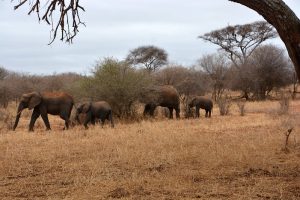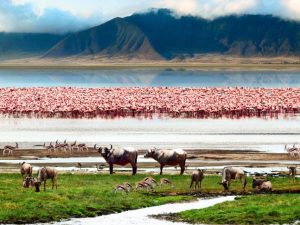Weather Patterns in Nyerere National Park
Nyerere National Park, formerly known as Selous Game Reserve, is one of the largest conservation areas in Africa, covering over 50,000 square kilometers in southern Tanzania. The park is renowned for its diverse wildlife and pristine natural landscapes, making it a popular destination for safari enthusiasts and nature lovers.
Weather Dynamics in Nyerere National Park
The weather patterns in Nyerere National Park are characterized by a tropical climate with distinct wet and dry seasons. The wet season typically occurs between November and May, with the peak rainfall in March and April. During this time, the park transforms into a lush green paradise, attracting a plethora of migratory birds and providing abundant grazing opportunities for the resident wildlife.
Conversely, the dry season, which runs from June to October, sees a significant decrease in precipitation levels. The vegetation begins to dry up, making it easier to spot animals as they congregate around water sources. The temperatures during the dry season can soar, with the midday heat often reaching over 30 degrees Celsius. It is essential for visitors to stay hydrated and seek shade during the hottest parts of the day.
Factors Influencing Climate Variability
Several factors influence the climate variability in Nyerere National Park, including geographical location, topography, and the Indian Ocean. The park is situated in a region known as the East African Rift Valley, which plays a crucial role in shaping the local weather patterns. The valley creates a natural corridor for air masses, resulting in distinct seasonal changes in temperature and precipitation.
The topography of Nyerere National Park also plays a significant role in the climate variability. The park is characterized by a diverse landscape, including savannahs, woodlands, and wetlands. These different ecosystems have their microclimates, leading to variations in temperature and rainfall across the park. For example, the woodlands tend to retain more moisture, making them cooler and more humid compared to the open savannahs.
The proximity of Nyerere National Park to the Indian Ocean also influences its weather patterns. The ocean acts as a source of moisture, which is carried inland by prevailing winds, contributing to the rainfall in the wet season. Additionally, the sea surface temperatures can impact the intensity and frequency of weather events, such as cyclones, which can affect the park’s climate.
In conclusion, the weather patterns in Nyerere National Park are a result of various factors, including geographical location, topography, and oceanic influences. Understanding these dynamics is essential for visitors planning a safari in the park, as it can help them prepare for the different weather conditions they may encounter. To experience the diverse climate of Nyerere National Park firsthand, book a safari with Sunset Africa Safari by contacting info@sunsetafricasafari.com.



